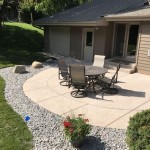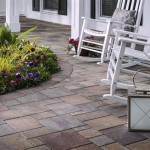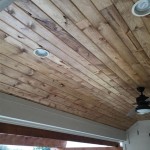Essential Aspects of How to Fix Patio Concrete
A well-maintained patio is an extension of your living space, providing an inviting outdoor area for relaxation and entertainment. However, concrete patios can develop cracks, chips, and other imperfections over time due to factors such as weather, heavy foot traffic, and settling. Repairing these issues promptly is crucial to maintain the aesthetic appeal and functionality of your patio. Here are some essential aspects to consider when fixing patio concrete:
Types of Concrete Damage
Before beginning repairs, it's important to identify the type of damage your patio concrete has sustained. Common types of damage include:
- Cracks: Cracks can vary in size and severity, from hairline fractures to large, deep cracks. They can be caused by temperature fluctuations, ground movement, or heavy loads.
- Chips: Chips are small pieces of concrete that have broken off the surface. They can be caused by impact, wear and tear, or frost damage.
- Spalling: Spalling occurs when the surface layer of concrete flakes or peels off. It can be caused by freeze-thaw cycles, chemical reactions, or poor construction practices.
Materials Needed
Once you have identified the type of damage, you will need to gather the necessary materials for repair. These may include:
- Concrete patch mix: Choose a pre-mixed concrete patch mix designed for outdoor use and compatible with the damaged area.
- Concrete bonding agent: A bonding agent helps to create a strong bond between the old and new concrete.
- Crack sealant: For larger cracks, a crack sealant is used to fill and seal the crack, preventing further damage.
- Masonry tools: A trowel, float, and smoothing tool will be necessary for applying and finishing the concrete.
Repairing Cracks
To repair cracks, follow these steps:
- Clean the crack: Remove any dirt or debris from the crack using a wire brush or compressed air.
- Apply bonding agent: Apply a thin layer of concrete bonding agent to the inside of the crack using a brush.
- Fill the crack: Fill the crack with concrete patch mix, pressing it firmly into place. Use a trowel to smooth the surface.
- Allow to cure: Allow the patch to cure for the recommended time, usually several hours or overnight.
- Seal the crack (optional): For larger cracks, apply a crack sealant over the patch to further protect it from water penetration.
Repairing Chips
To repair chips, follow these steps:
- Clean the area: Remove any loose concrete fragments from the chipped area.
- Apply bonding agent: Apply a thin layer of concrete bonding agent to the chipped area and the surrounding concrete.
- Fill the chip: Fill the chipped area with concrete patch mix, pressing it firmly into place. Use a trowel to smooth the surface.
- Allow to cure: Allow the patch to cure for the recommended time, usually several hours or overnight.
Repairing Spalling
To repair spalling, follow these steps:
- Remove loose concrete: Use a hammer and chisel to remove any loose or flaking concrete from the spalled area.
- Clean the area: Remove any dust or debris from the spalled area using a brush or compressed air.
- Apply bonding agent: Apply a thin layer of concrete bonding agent to the exposed concrete and the surrounding area.
- Fill the spalled area: Fill the spalled area with concrete patch mix, pressing it firmly into place. Use a trowel to smooth the surface.
- Allow to cure: Allow the patch to cure for the recommended time, usually several hours or overnight.
Preventive Measures
To prevent future damage to your patio concrete, consider the following preventive measures:
- Seal the concrete: Applying a concrete sealer can help protect the surface from moisture penetration, staining, and wear.
- Control moisture: Divert water away from the patio by installing proper drainage and downspouts.
- Avoid heavy loads: Distribute heavy furniture or planters evenly to prevent excessive weight on specific areas.
- Regular maintenance: Regularly inspect your patio concrete for cracks or chips and repair them promptly to prevent further damage.
Conclusion
By following these essential aspects for fixing patio concrete, you can effectively restore its structural integrity and aesthetic appeal. Remember to identify the type of damage accurately, use appropriate materials, and follow the repair steps carefully. With proper care and maintenance, your patio concrete can remain a durable and inviting outdoor space for years to come.

5 Ways To Fix Ed Or Damaged Concrete Patio Cricket Pavers

Ed Concrete See How We Repaired Our Gross Patio 2024

How To Fix Resurface Damaged Concrete Sidewalk Diy

How Can I Salvage A Crumbling Ed 24x24 Triangle Shaped Concrete Patio Without Tearing It Out Hometalk

Arlington Heights Concrete Repair Hero

The Best Way To Fix A Ed Patio

Diy Broken Concrete Patio Urbanite Full Tutorial An Oregon Cottage

3 Concrete Resurfacing Options For Patio

How To Fix S In Concrete

Repair Ed Concrete Patio
Related Posts








